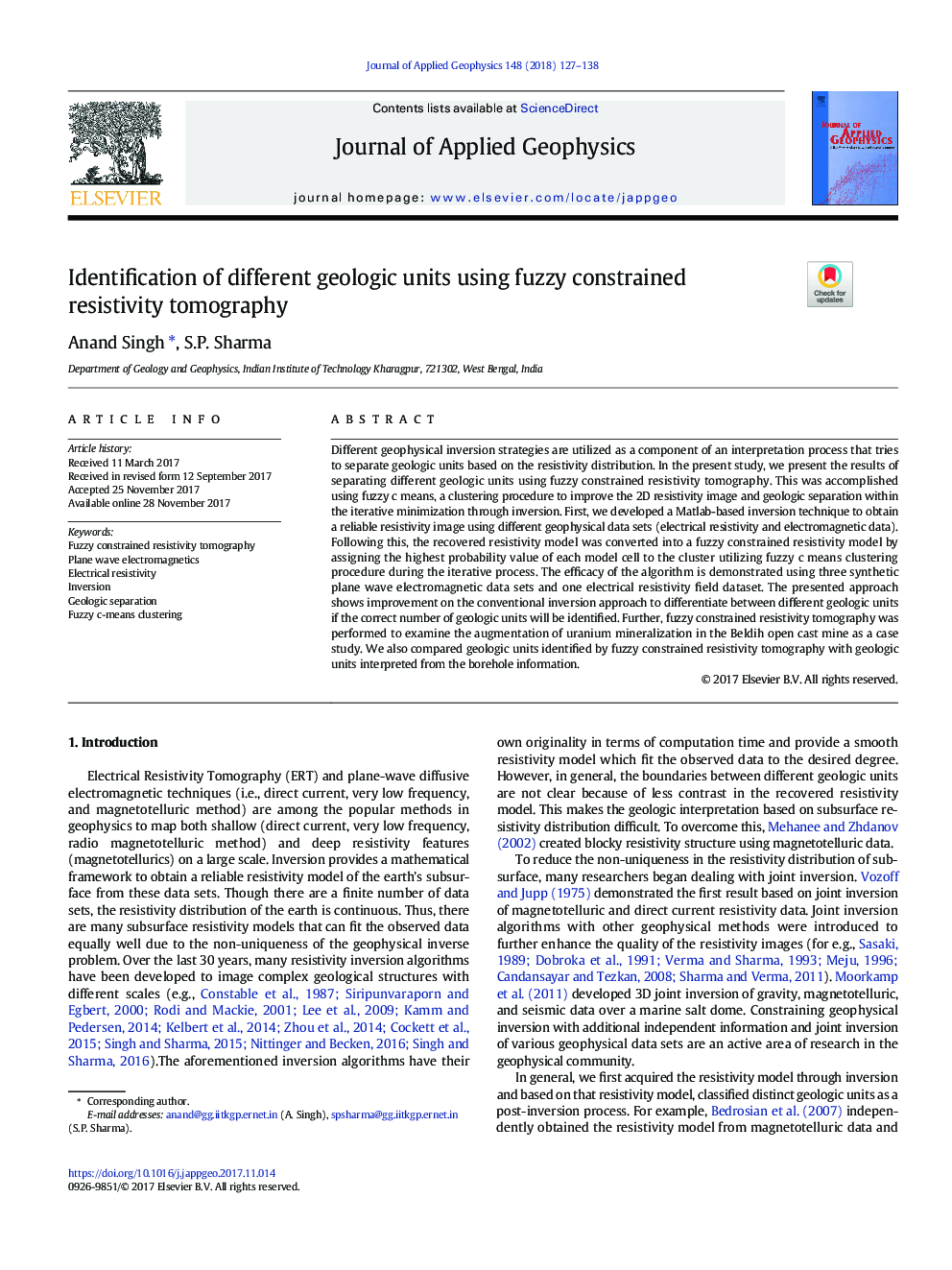| Article ID | Journal | Published Year | Pages | File Type |
|---|---|---|---|---|
| 8915547 | Journal of Applied Geophysics | 2018 | 12 Pages |
Abstract
Different geophysical inversion strategies are utilized as a component of an interpretation process that tries to separate geologic units based on the resistivity distribution. In the present study, we present the results of separating different geologic units using fuzzy constrained resistivity tomography. This was accomplished using fuzzy c means, a clustering procedure to improve the 2D resistivity image and geologic separation within the iterative minimization through inversion. First, we developed a Matlab-based inversion technique to obtain a reliable resistivity image using different geophysical data sets (electrical resistivity and electromagnetic data). Following this, the recovered resistivity model was converted into a fuzzy constrained resistivity model by assigning the highest probability value of each model cell to the cluster utilizing fuzzy c means clustering procedure during the iterative process. The efficacy of the algorithm is demonstrated using three synthetic plane wave electromagnetic data sets and one electrical resistivity field dataset. The presented approach shows improvement on the conventional inversion approach to differentiate between different geologic units if the correct number of geologic units will be identified. Further, fuzzy constrained resistivity tomography was performed to examine the augmentation of uranium mineralization in the Beldih open cast mine as a case study. We also compared geologic units identified by fuzzy constrained resistivity tomography with geologic units interpreted from the borehole information.
Related Topics
Physical Sciences and Engineering
Earth and Planetary Sciences
Geophysics
Authors
Anand Singh, S.P. Sharma,
